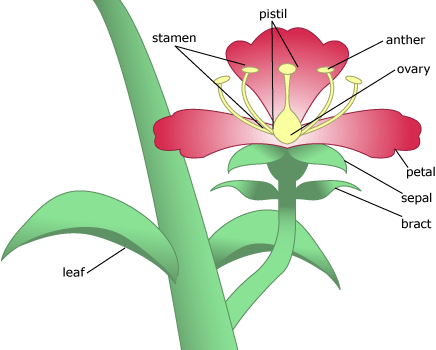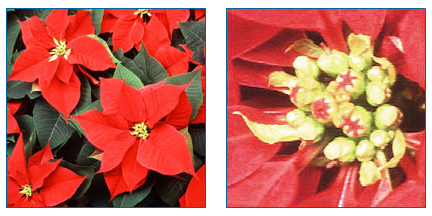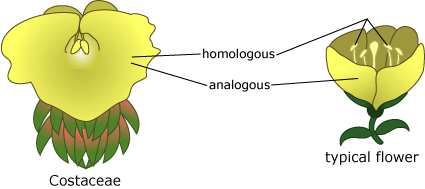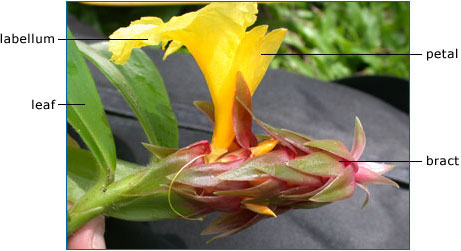 You might look at a flower petal and think that it’s basically the same as all other petals — that the petals of roses, daisies, lilies, bird of paradise plants, and poinsettias are all basically the same structure with slight variations in number, color, and shape. And in terms of pollinator attraction that may be true — but in terms of evolutionary history, it is not.
You might look at a flower petal and think that it’s basically the same as all other petals — that the petals of roses, daisies, lilies, bird of paradise plants, and poinsettias are all basically the same structure with slight variations in number, color, and shape. And in terms of pollinator attraction that may be true — but in terms of evolutionary history, it is not.
The ancestor of all modern flowers probably had all the parts shown below, as do many modern flowers. The petals attract pollinators, and the sepal and bract often support the flower. The ovary contains the female reproductive parts, and the stamens (the male reproductive system) store the pollen — though these two parts may have occurred in separate individuals in the ancestral flower.
However as flowering plants diversified, different lineages evolved to use these basic parts in different ways. For example, in poinsettias, the bract evolved bright red coloration and began to function as an advertisement to pollinators. So those “petals” in a poinsettia are not actually petals — they are homologous to bracts in most other flowering plants, meaning that both evolved from the same structure in their common ancestor. On the flipside, poinsettia bracts look and function much like the petals found in most other flowering plants, meaning that the two structures are analogous — or similar because of convergent evolution. The real petals of a poinsettia were lost entirely as they evolved.

The Costaceae, on the other hand, have relatively woody bracts (though they do sometimes play a role in pollinator attraction) — but two of their stamens (the pollen-bearing male reproductive organs) are quite unusual. These stamens evolved to be sterile, fused together, and now function as a petal. Together, these modified stamens form a structure called the labellum. The labellum in gingers is homologous to stamens and analogous to petals in most other flower lineages.


So is a petal always a petal? No — at least not when it’s some other part of the flower in disguise!
Want to know more about homology and analogy? Check out our interactive module on this topic.
